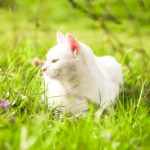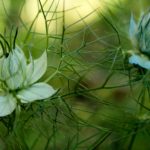Juhannus – Midsummer Eve – Finnish Vocabulary
Midsummer (juhannus) is an important celebration for Finns at the end of June. Its date isn’t set on a specific date: it always takes place on the Saturday that falls between the 20th and the 26th of June.
1. The History of Finnish Midsummer
Way back, Midsummer was a pagan celebration, during which Finns celebrated the god of thunder: Ukko. Midsummer also marks the middle of summer (keskikesä). It always falls during the week of the longest day of the year: summer solstice (kesäpäivänseisaus). In Finland this means we have “nightless nights” (yötön yö) in the North, during which the sun doesn’t set at all.
When Christianity took root in Finland, the original reason for celebrating changed: Christians celebrate the birthday of John the Baptist (Johannes Kastaja).
| Finnish | English |
|---|---|
| juhannus | Midsummer |
| juhannusaatto | Midsummer’s Eve |
| juhannuspäivä | Midsummer’s Day |
| juhannusyö | Midsummer’s Night |
| juhannuspyhät | Midsummer weekend |
| keskikesä | the middle of summer |
| kesäpäivänseisaus | summer solstice |
2. Mökkijuhannus vai kaupunkijuhannus?
There are a lot of traditions (perinne) related to juhannus, both ancient and more modern. It’s very common for Finns to retreat to their summer cottage (kesämökki) for Midsummer. We call this mökkijuhannus “cottage Midsummer”. It’s starting to be more common, however, for people to stay in the city for Midsummer, which we can call kaupunkijuhannus “city Midsummer”.
Of course Finns generally spend time in the sauna (saunoa) during Midsummer. If you’re spending it at the summer cottage, it’s traditional to flank to entrance of the sauna with young birch (koivu) trees cut down especially for this purpose. Generally there’s a lake next to the summer cottage and people jump straight into the lake from the sauna.
It’s also common to raise the Finnish flag if you have a flag post at your summer cottage. You’re allowed to raise it on Midsummer Eve starting from 6 pm, and keep it up until the next day at 9 pm.
| Finnish | English |
|---|---|
| perinne, tapa | tradition |
| perinteet, tavat | traditions |
| kesämökki | summer cottage |
| mökkijuhannus | Midsummer at the cottage |
| kaupunkijuhannus | Midsummer in the city |
| viettää juhannusta | to celebrate Midsummer |
| saunoa | to take a sauna |
| juhannussauna | Midsummer sauna |
| juhannuskoivu | Midsummer birch tree |
| liputuspäivä | flag day |
3. Kokoo koko kokko, Kokko. Koko Kokkoko? Koko kokko.
The above conversation can be translated as:
“Assemble the whole bonfire, Kokko.”
“The whole bonfire?”
“The whole bonfire.”
It contains the verb koota “to assemble”, the noun kokko “bonfire”, the name “Kokko” and the word koko “whole”.
The Midsummer bonfire (juhannuskokko) is an ancient tradition (perinne) which was meant to banish evil spirits. It was also believed that it would make the year’s harvest (sato) better. This tradition is still observed in many places. In cities, a larger bonfire is often organized and attended by a large amount of people. Sometimes these bonfires are mounted on top of a raft (lautta) and float on the lake! Many people also make their own bonfire at the summer cottage, which is usually placed close to a lake to prevent the fire spreading.
| Finnish | English |
|---|---|
| vanha perinne | old tradition |
| juhannuskokko | Midsummer bonfire |
| polttaa juhannuskokko | to burn a bonfire |
| karkottaa pahoja henkiä | to banish evil spirits |
4. Juhannustaiat
An ancient Midsummer tradition that has survived the times to some extent is Midsummer magic (juhannustaika). These magic rituals were meant, for example, to improve your luck in finding a partner, and to find out who your future partner would be. In modern days especially these are more of a game than anything serious.
One common tradition was to collect seven (or nine or eleven depending on the area) different types of flowers. These flowers were then placed underneath your pillow during Midsummer night. The idea was that you would see your future husband in your dreams that night.
Another typical tradition to find out more about your future partner was to strip down naked and look into a well, pond or spring. You were supposed to see someone’s face into the water. In fact, stripping down was part of many of the Midsummer traditions. Rolling down naked in a dewy meadow was thought to improve your marriage. Running three times around a field while naked should also show you your future partner after the third lap.
| Finnish | English |
|---|---|
| juhannustaiat | Midsummer magic |
| taikausko | superstition |
| poimia kukkia | to pick flower |
| tyynyn alla | underneath the pillow |
| alasti, alaston | naked |
| tuleva puoliso | future partner |
| tuleva sulhanen | future groom |
| tuleva morsian | future bride |
5. Juhannustanssit
For many (especially the older generations) juhannus also means participating in dance events (lavatanssit). These dances are not disco-style; they mainly consist of dances such as the tango and waltz (valssi). This event generally takes place of Midsummer Eve and Night. They’re considered quite romantic among the older generations.
| Finnish | English |
|---|---|
| juhannustanssit | Midsummer dance festival |
| tanssilava | dance floor |
| lavatanssit | event where people dance on dance floor |
| valssi | waltz |
| humppa | folk dance called humppa |
| tango | tango |
| foksi | foxtrot |
| jenkka | folk dance called jenkka |
6. A Problem During Midsummer
Midsummer comes with one common problem that arises every year. Finns like to increase their alcohol consumption for Midsummer. Most people spend Midsummer near a lake, and like to go swimming after the sauna. Thus, we generally have an increase in the number of drownings around Midsummer.
| Finnish | English |
|---|---|
| alkoholi | alcohol |
| humalassa | drunk |
| hukkua | to drown |
| onnettomuus | accident |
7. Example Sentences
| Finnish | English |
|---|---|
| Juhannus on keskikesän juhla. | Midsummer is the middle of summer celebration. |
| Aurinko ei laske lainkaan Pohjoisessa. | The sun does not set at all in the North. |
| Kesällä on öisin valoisaa. | It’s light during nights in summer. |
| Alun perin juhannus oli pakanajuhla. | Originally Midsummer was a pagan festival. |
| Me vietämme juhannusta mökillä. | We spend Midsummer at the cottage. |
| Vietän mökkijuhannusta. | We spend Midsummer at the cottage. |
| Olemme juhannuksena mökillä. | We’re at the cottage during Midsummer. |
| Vietämme juhannuspyhät mökillä. | We spend the Midsummer days at the cottage. |
| Me vietämme juhannusta kaupungissa. | We spend Midsummer in the city. |
| Me vietämme kaupunkijuhannusta. | We spend Midsummer in the city. |
| Mennään katsomaan juhannuskokkoa! | Let’s go see the Midsummer bonfire! |
| Me poltamme juhannuskokon mökillä. | We burn a bonfire at the cottage. |
| Mennäänkö juhannustansseihin? | Shall we go to the Midsummer dance event? |
| Juhannuksena liputetaan. | Flags are raised at Midsummer. |
| Lomani alkaa juhannuksena. | My vacation starts at Midsummer. |
| Juhannuspäivä on pyhäpäivä. | Midsummer’s Day is a public holiday. |
| Moni menee naimisiin juhannuksena. | Many get married during Midsummer. |
| Juhannuksena usein grillataan. | People often grill during Midsummer. |
| Juhannuksena juopotellaan. | People get drunk during Midsummer. |
| Kolme ihmistä hukkui tänä vuonna. | Three people drowned this year. |
| Laitan seitsemän kukkaa tyynyni alle. | I put seven flowers underneath my pillow. |
| En usko juhannustaikoihin. | I don’t believe in Midsummer magic rituals. |
| Nostamme Suomen lipun mökillä. | We raise the Finnish flag at the cottage. |
| Juhannussauna on ihanaa. | Midsummer sauna is great. |
| Valvoimme koko yön juhannuksena. | We stayed up the whole night at Midsummer. |
| Hyvää juhannusta! | Happy Midsummer! |
Watch some Midsummer related videos!
- Almost Finns: Midsummer in Finland
- A kind of adventurous life: Midsummer in Finland
- Siskonpeti kausi 2: Musiikkivideo: Suomen juhannus
- Lastenohjelmia suomeksi: Lego city – Juhannus – osa 1





I love your blog, please dont stop. thanks a lot for sharing your knowledge with us!
Thank you! 🙂
Any plans to add Christmas?
Yup! Once it’s a little closer 🙂